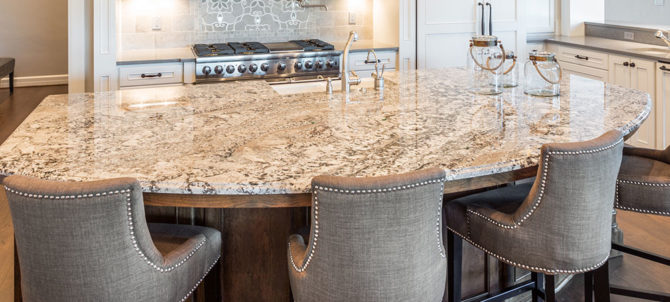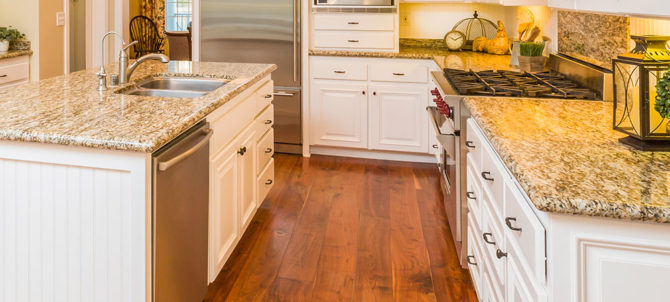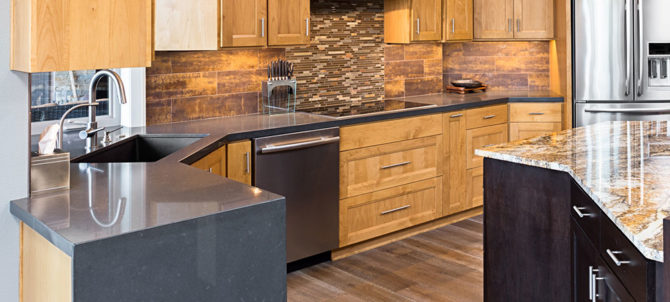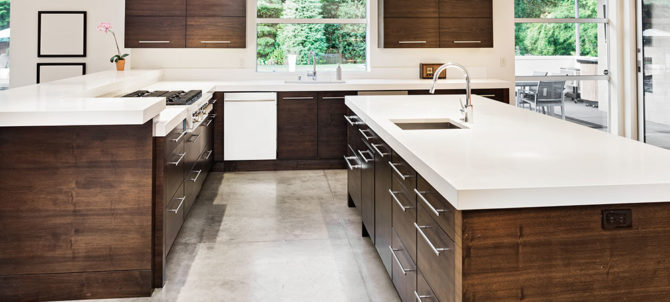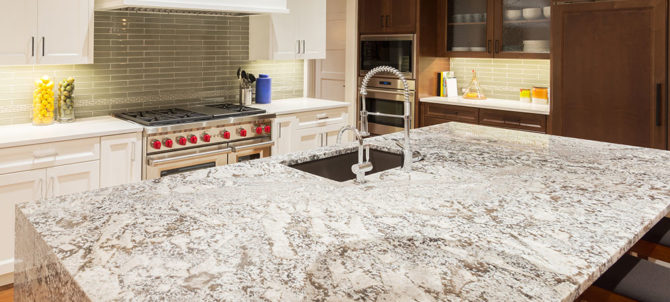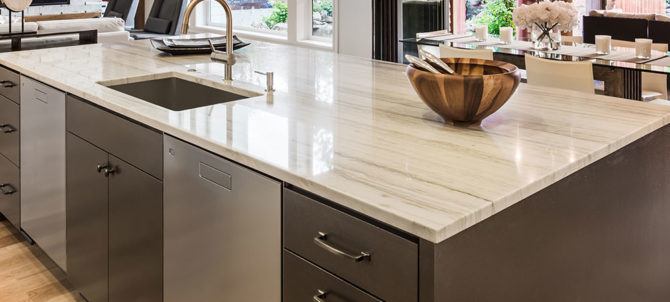
If you are looking to install new kitchen countertops, there are a number of things you should pay attention to in order to install the units properly. These things include:
Your preferred look
Having an idea of the ultimate kitchen’s design is beneficial as it helps you select the best kitchen counters for your home. Consider the look you want to achieve before making your selection for new kitchen countertops.
You should remember that particular countertops may give your kitchen a more classic appearance, while others may provide your house with a more modern feel.
Should you have a preference for a modern kitchen, you can wind up selecting unusual countertop materials. The type of countertop material you select for your kitchen will depend on the overall look you want to achieve.
There is no right or wrong material to go for. It all depends on you.
Your lifestyle
Certain lifestyles are more suited for particular types of kitchen countertops than others. For example, a white granite countertop might not be the greatest choice for your kitchen if you have a busy household with lots of spills and accidents.
To tell whether a particular material is suitable for you, consider how your kitchen will be used, as certain materials for countertops are more porous or more likely to chip and crack.
This will help in determining the required level of durability for the countertop surface. Speak with an expert if you’re unsure which material would suit your lifestyle the best. Experts in countertops will know which material is ideal for your kitchen.
You should note that your lifestyle will determine how long the countertops last. This means that as much as you might love particular countertops, if your lifestyle doesn’t fit them, it will be pointless to install them as, after a few uses, they will break.
To be on the safe side, follow the instructions given by the countertop professional. Don’t go against their advice, as chances are that you will end up wasting your money.
Layout of your home
The kitchen should unite the entire house because it is the center. Having stated that you ought to think about the design and arrangement of your property and make an effort to unify the style throughout.
You should confirm that your open-concept home’s elements all function as a unit to provide a seamless flow throughout the area.
The style you decide on for your kitchen should be reflected throughout your house. The reason for this is that your home will look much better if the finishes and color schemes are similar.
Even if your house is not an open concept, having a connection between your kitchen and the rest of the house is still beneficial. When selecting the color scheme for your kitchen counters, try to stick to a basic palette.
Your budget
You must first establish a budget if you don’t already have one. You should note that you should do this before choosing your kitchen countertops.
If this is your first time installing the countertops, you should note that they can be costly, so be sure to have enough cash on hand. When determining the budget for your kitchen countertop, try to be reasonable.
Determine which materials would be most appropriate for your budget and consult a professional to select the ideal countertops for your house.
Try to choose premium materials for your kitchen countertop that will last a lifetime while staying within your budget.
You should note that your budget should not only include the cost of buying the countertops but also that of installing them. The last thing you want is to buy new countertops only to find that you don’t have money to install them.
Edging
Even while the edging you decide on for your finished countertop may appear insignificant, it has a significant impact on the look of the counters. The edge not only gives your projects the ideal final touch but also expresses your personal preferences.
You should work with your installation contractor and agree on the best edging style that will match the design of your home and reflect your style.
You should note that the contractor who installs the countertops might not be the ideal one to install the edging, so it’s always wise to find an edging professional who will expertly install it for you.
Backsplash
While the backsplash area in a kitchen is often overlooked, it may be a valuable space to upgrade your kitchen cabinets because it runs along the countertop.
You should choose a backsplash that complements the style of the house and your countertops. For example, selecting a backsplash made of glazed ceramic tiles will enhance the kitchen’s aesthetic appeal.
Chances are that there will be fat and other materials landing on the backslash, so ensure that it’s easy to clean. This calls for you to avoid any material that might be problematic to clean.
The backsplash is another place where you can get creative with color and style to make your kitchen pop if you’ve selected a more natural, subdued tone for your countertop. It would also be a relatively simple design feature to change up sometimes.
There is no right or wrong backsplash to go with. It all depends on your preferences and your desired look.
Maintenance
Many people will install countertops, but the last thing on their minds is how they will maintain them. This is wrong.
You should know that for you to keep the countertops in good shape, you need to maintain them. The countertops you choose should be based on your lifestyle. If you love cooking, you need countertops that will be easy to maintain, as getting high-maintenance surfaces will be an inconvenience.
If you aren’t sure about the counters to get, get the input of the professionals.
Remember to maintain the countertops of your choice correctly. This calls for you to seal your granite countertops Raleigh if you need to. You also should protect your surfaces from scratches by avoiding cutting directly on them.
